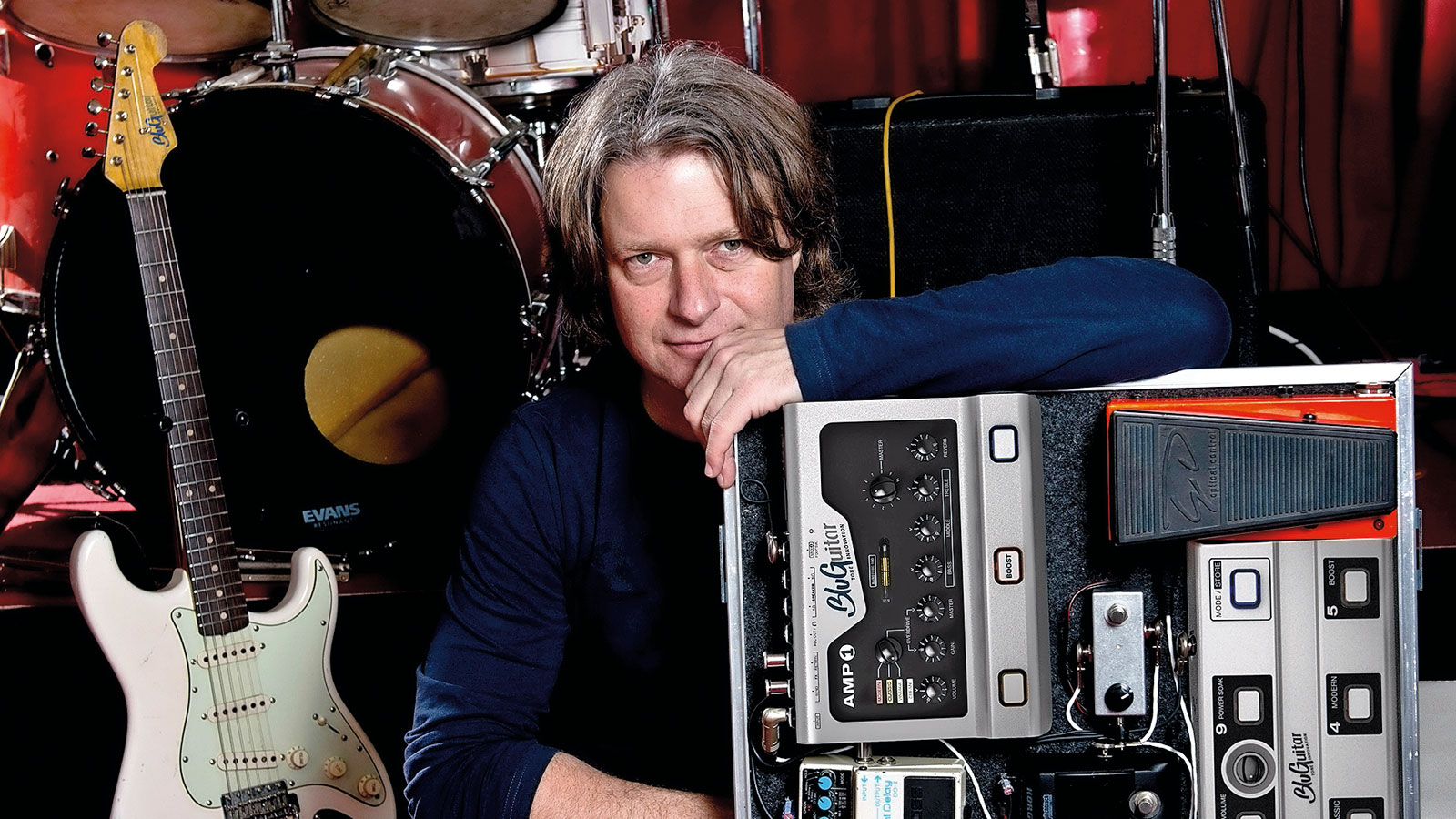Thomas Blug on creating the revolutionary Amp 1
The 100-watt head... at your feet

Possibly the smallest 100-watt head in the world - and one of the most versatile. Revolution or evolution? We get the lowdown on this remarkable new amplifier from Thomas Blug himself.
You had an early passion for electronics. Which came first, that or the guitar?
"From around the age of 11, I was tinkering with hi-fi amps and radios. I started playing guitar around 14. At 18, I sold most of my electronics stuff, and at 22 became a demonstrator for Hughes & Kettner. I wasn't happy with some of their products, so I ended up in R&D and back into electronics. I also worked for Steinberg on their software amp-modelling projects."
"I always wanted an amp that I could carry everywhere, and Amp 1 fits in my gigbag, on my pedalboard: I can go anywhere in the world"
You're obviously not a valve purist then, but there is one valve in the Amp 1...
"There's a trend towards super-lightweight amps at the moment, especially for bass, using Class D output stages, which can put a lot of power in a small space without generating much heat. For me, they don't have a lot of character.
"I know from my work with valves that most of an amp's character is in the output stage, so I was thinking how to get some valve character into Amp 1 and came up with an idea that uses the Nanotube - the sub-miniature military valve.
"Amp 1's output stage is totally unique. If you use the power soak function that comes in the Remote 1 controller, you'll find you can turn it down and make a sound just like a big cranked-up amp at bedroom level. There's a tiny fan to keep the heat down; although there isn't that much, it normally runs at half speed, so it is super-quiet."
Get the MusicRadar Newsletter
Want all the hottest music and gear news, reviews, deals, features and more, direct to your inbox? Sign up here.
How long have you been working on the Amp 1?
"I started around 2010. I've been involved with Hughes & Kettner for over 20 years, and one of the earlier products I created was the Tubeman - one of the first floor preamps, with multiple channels, direct recording out, et cetera. Amp 1 is kind of the end of that journey.
"I always wanted an amp that I could carry everywhere, and Amp 1 fits in my gigbag, on my pedalboard: I can go anywhere in the world - 90 to 260 volts - and wherever I am, I can plug it in and it will work because of the special power supply. The recording out is analogue, maybe not as good as some sophisticated modelling software, but for live gigging it's more than good enough.
"All I need is a speaker and I know I'm going to have a real good tone. When I play with my band, my Amp 1 is on my 'board, which means there's one less piece of gear to transport, and it reduces the cabling."
"I often have people coming to photograph my gear, my pedalboard and so on, and they ask me 'where's your amp?'"
You must have had a few double-takes from some gearheads...
"Most people look at Amp 1 for the first time and don't see it as an amp. I often have people coming to photograph my gear, my pedalboard and so on, and they ask me 'where's your amp?' I point to Amp 1 on my pedalboard, and they go 'what?'"
How easy was it to get the sounds right?
"My philosophy is to keep things simple and focus on the core tone. With Amp 1, I deliberately voiced each channel so the frequencies would fit in with a live band and be heard - that was really, really important and took almost a year of fine-tuning to achieve. I had the first proper prototype to play last New Year's Eve, and I was still making final adjustments last week!
"Next week, I fly to China to put the final touches to the production, packaging and so on, after that they will start shipping, hopefully just in time for Christmas!"
“I’m beyond excited to introduce the next evolution of the MT15”: PRS announces refresh of tube amp lineup with the all-new Archon Classic and a high-gain power-up for the Mark Tremonti lunchbox head
“Its mission is simple: unleash the power of any amplifier or line-level source without compromise”: Two Notes promises a “watershed” in tube amp control with the Torpedo Reload II











